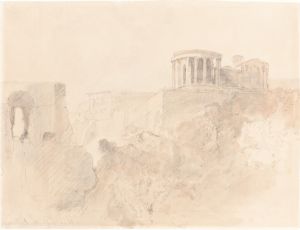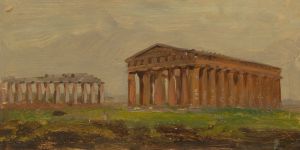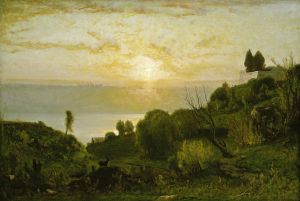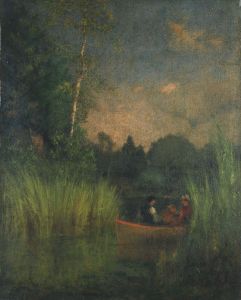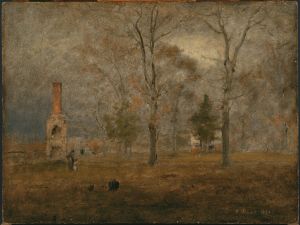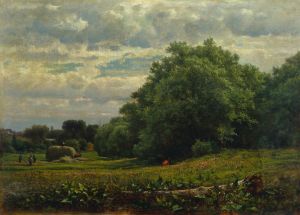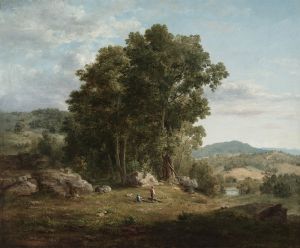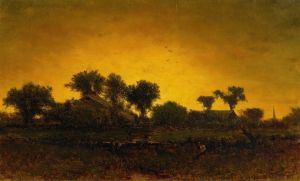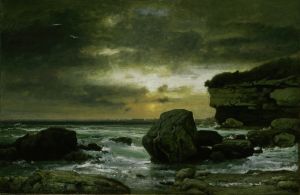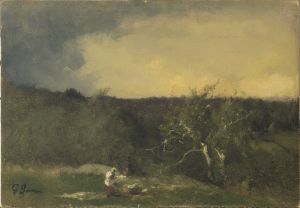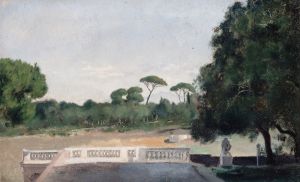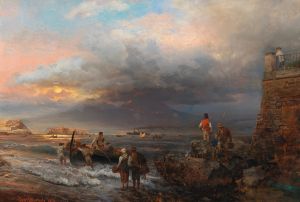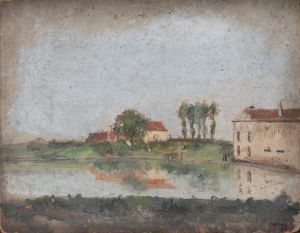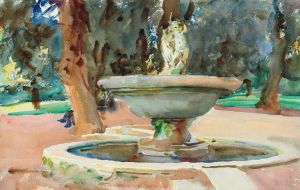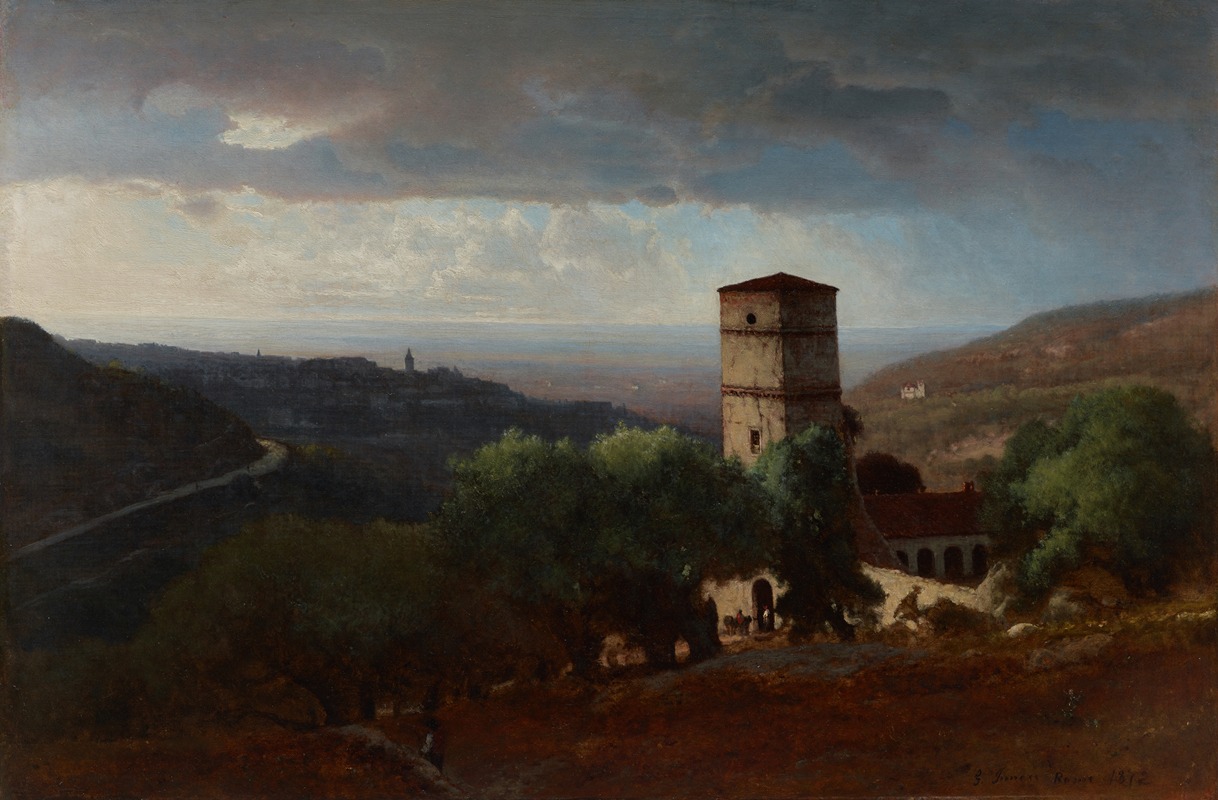
View of Rome from Tivoli
A hand-painted replica of George Inness’s masterpiece View of Rome from Tivoli, meticulously crafted by professional artists to capture the true essence of the original. Each piece is created with museum-quality canvas and rare mineral pigments, carefully painted by experienced artists with delicate brushstrokes and rich, layered colors to perfectly recreate the texture of the original artwork. Unlike machine-printed reproductions, this hand-painted version brings the painting to life, infused with the artist’s emotions and skill in every stroke. Whether for personal collection or home decoration, it instantly elevates the artistic atmosphere of any space.
"View of Rome from Tivoli" is a painting by the American artist George Inness, who is recognized as one of the most influential figures in 19th-century American landscape painting. Inness was born in 1825 in Newburgh, New York, and he became known for his ability to blend the natural world with a sense of spirituality and emotion, often drawing inspiration from the Hudson River School and the Barbizon School of France.
The painting "View of Rome from Tivoli" was completed in 1870, during a period when Inness was deeply influenced by his travels in Europe. Inness visited Italy several times throughout his career, and these trips had a profound impact on his artistic development. Italy's rich history, culture, and landscapes provided Inness with a wealth of inspiration, and he often depicted Italian scenes in his work.
This particular painting captures a view from Tivoli, a town located about 30 kilometers east of Rome. Tivoli is renowned for its stunning landscapes and historical sites, such as the Villa d'Este and Hadrian's Villa. Inness's depiction of the view from Tivoli includes the rolling hills and lush vegetation that characterize the region, with the city of Rome visible in the distance. The composition reflects Inness's skill in capturing the atmospheric effects of light and color, creating a sense of depth and tranquility.
Inness's style during this period was marked by a move away from the detailed realism of his earlier work towards a more expressive and atmospheric approach. He was influenced by the French Barbizon School, which emphasized mood and emotion over precise detail. In "View of Rome from Tivoli," Inness employs a soft, diffused light that bathes the landscape, creating a harmonious and serene scene. The use of warm earth tones and gentle brushstrokes contributes to the painting's overall sense of peace and reflection.
Throughout his career, Inness was interested in the philosophical and spiritual dimensions of art. He was influenced by the writings of Emanuel Swedenborg, a Swedish theologian and philosopher, whose ideas about the connection between the physical and spiritual worlds resonated with Inness. This influence is evident in "View of Rome from Tivoli," where the landscape is not merely a depiction of nature but also a reflection of a deeper, spiritual reality.
"View of Rome from Tivoli" exemplifies Inness's mature style and his ability to convey a sense of place that is both specific and universal. The painting is celebrated for its atmospheric quality and its ability to evoke a sense of contemplation and reverence for the natural world. Today, George Inness is regarded as a master of American landscape painting, and his works continue to be admired for their beauty and emotional depth.





